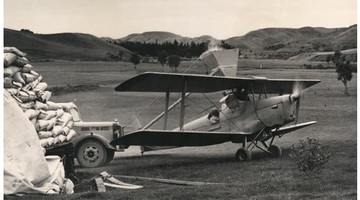Dr Ross Monaghan from AgResearch at Invermay in Otago talks about various practices that can be employed to manage nutrient losses from becoming a problem on farmland.
Transcript
DR ROSS MONAGHAN
Some of the farm management practices that are most commonly employed to minimise the risk of nitrogen loss are to make sure that you don’t apply too much nitrogen per application or too much in any one year. We make sure that farm dairy effluent we’re collecting back in the milking parlour is well managed, so it’s returned to land at a low rate. Something that can help reduce direct losses of urine near to streams is just to prevent stock from urinating directly into those riparian zones.
Another strategy involves being careful about when urine is deposited back to pastures. Where we can have animals under cover or on a stand-off where we capture the urine and we store it through the risky winter period and return it to land in the following spring, we can reduce nitrate leaching losses quite considerably.
One important strategy for helping to manage the nitrogen problem is the way we look after riparian and wetland areas. Wetlands are really important parts of our landscape that act as filters for some of the run-off, particularly for filtering out nitrogen that’s passing through wetlands. So it’s really important that we protect the wetlands that we have remaining and reinstall some that have been drained and are perhaps overgrazed and to make sure that we don’t allow stock to graze those riparian zones and either cause treading damage or excrete urine or dung directly into the waterways.
Urine is very high in nitrogen, and in the case of dung, it’s quite enriched with phosphorous and faecal bacteria. Phosphorous contributes to that eutrophication issue, and faecal material can carry with it zoonotic microorganisms that can make us sick, so we want to avoid that risk altogether as best we can. The main way is just to put up a fence.
The Overseer® tool is a nutrient budgeting model that has been developed with input from other universities and CRIs. It’s a tool to help just guide nutrient management, and particularly inputs of fertiliser, but also to make sure that we don’t double up on fertility from effluents as well as from fertiliser. And increasingly, that tool is being used as a calculator to determine, for example, the nitrogen footprints to either water or to atmosphere from different types of farming activity and different types of landscapes and soils and climates. That tool is going to be essential to allow us to explore ways by which farmers can look at their budget and say, “OK, how can I maximise my nutrient efficiency, how can I minimise my losses, and how can I get the most bang for my buck in terms of purchasing fertiliser?”
Acknowledgements:
Dr Ross Monaghan, AgResearch, Invermay
McDonald’s Lime






